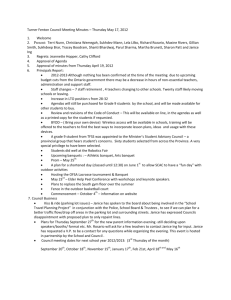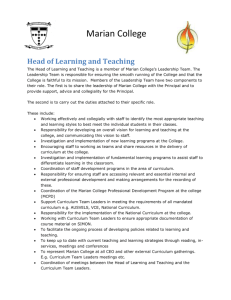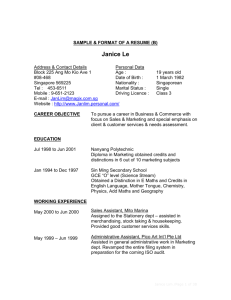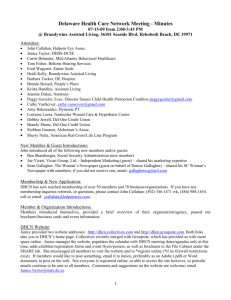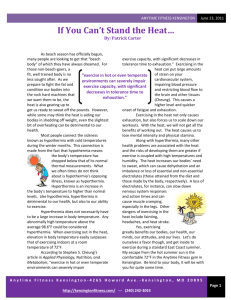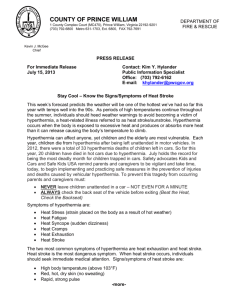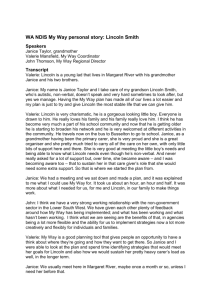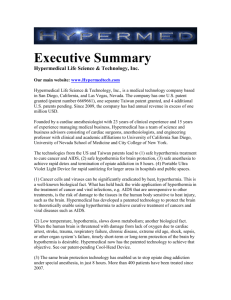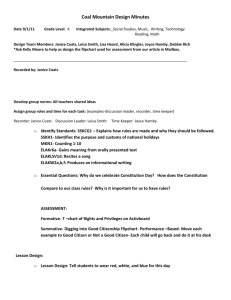Case Presentation
advertisement
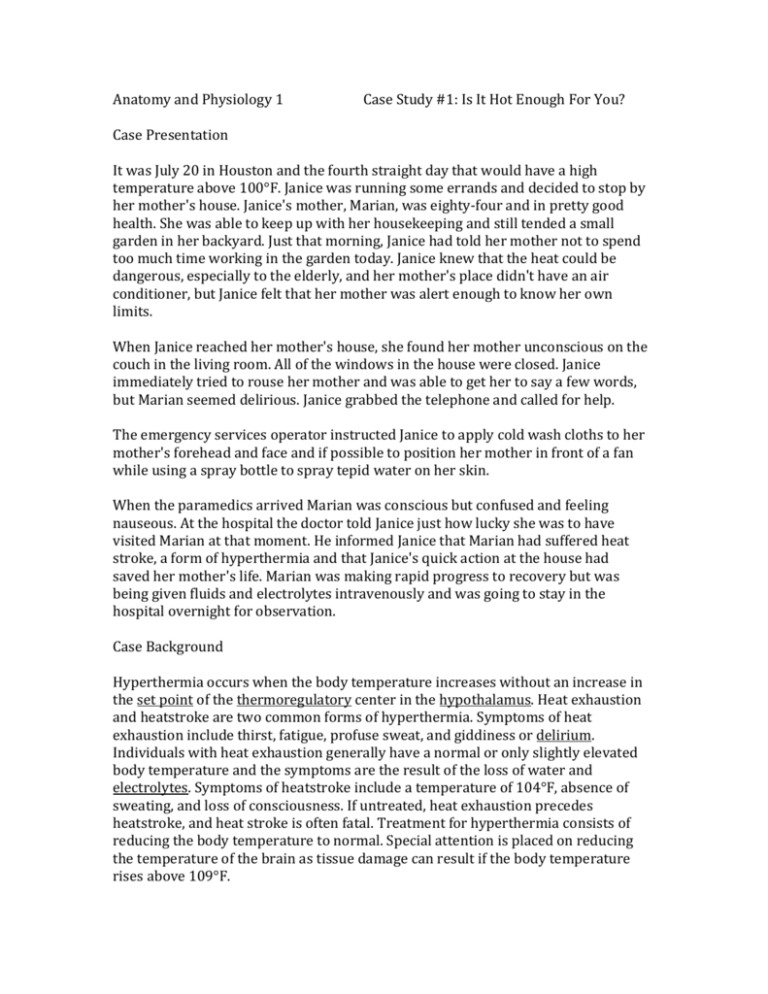
Anatomy and Physiology 1 Case Study #1: Is It Hot Enough For You? Case Presentation It was July 20 in Houston and the fourth straight day that would have a high temperature above 100°F. Janice was running some errands and decided to stop by her mother's house. Janice's mother, Marian, was eighty-four and in pretty good health. She was able to keep up with her housekeeping and still tended a small garden in her backyard. Just that morning, Janice had told her mother not to spend too much time working in the garden today. Janice knew that the heat could be dangerous, especially to the elderly, and her mother's place didn't have an air conditioner, but Janice felt that her mother was alert enough to know her own limits. When Janice reached her mother's house, she found her mother unconscious on the couch in the living room. All of the windows in the house were closed. Janice immediately tried to rouse her mother and was able to get her to say a few words, but Marian seemed delirious. Janice grabbed the telephone and called for help. The emergency services operator instructed Janice to apply cold wash cloths to her mother's forehead and face and if possible to position her mother in front of a fan while using a spray bottle to spray tepid water on her skin. When the paramedics arrived Marian was conscious but confused and feeling nauseous. At the hospital the doctor told Janice just how lucky she was to have visited Marian at that moment. He informed Janice that Marian had suffered heat stroke, a form of hyperthermia and that Janice's quick action at the house had saved her mother's life. Marian was making rapid progress to recovery but was being given fluids and electrolytes intravenously and was going to stay in the hospital overnight for observation. Case Background Hyperthermia occurs when the body temperature increases without an increase in the set point of the thermoregulatory center in the hypothalamus. Heat exhaustion and heatstroke are two common forms of hyperthermia. Symptoms of heat exhaustion include thirst, fatigue, profuse sweat, and giddiness or delirium. Individuals with heat exhaustion generally have a normal or only slightly elevated body temperature and the symptoms are the result of the loss of water and electrolytes. Symptoms of heatstroke include a temperature of 104°F, absence of sweating, and loss of consciousness. If untreated, heat exhaustion precedes heatstroke, and heat stroke is often fatal. Treatment for hyperthermia consists of reducing the body temperature to normal. Special attention is placed on reducing the temperature of the brain as tissue damage can result if the body temperature rises above 109°F. Instructions: 1. Work with a partner, to answer the questions listed below. You may use your text, reference books supplied in class, and medical information on the internet. Use the list of recommended websites provided for internet search. General search engines may be a starting point but should not be where you find your answers for write up. 2. Final product must include your references at the end of each answer. 3. You and your partner will submit one copy of your answers per team along with individual evaluation forms - please be sure to include all team members names on the answer sheet. Questions: 1. Define all underlined words in the background of the case, be sure your definitions are medical definitions. 2. Define homeostasis and describe how it relates to hyperthermia. 3. What is the difference between hyperthermia and hypothermia? 4. If you were Janice, in your phone call to emergency services, what details/descriptions of Marian’s condition and situation would you consider important to convey? 5. Explain why you think elderly individuals with poor circulation would have a greater risk of heat exhaustion or heat stroke? 6. What is the difference between heat exhaustion and heat stroke? 7. Why do you think elderly individuals with poor circulation would have a greater risk of suffering hypothermia? 8. What are the primary symptoms of hypothermia and the recommended emergency treatment? 9. Explain why spraying water on the skin while sitting in front of a fan would lower body temperature? 10. What is an electrolyte and why are they essential to the maintenance of homeostasis? 11. Do you think the severity of Marian’s condition would have been better or worse if she weighed 400 pounds? Explain your reasoning. 12. Would the severity of Marian’s condition been worse if she had developed sunburn while gardening in the morning? Explain your answer. 13. Why is tissue damage incurred if the body temperature rises above 109° F? 14. What does it mean when a person stops sweating, even if ambient temperature has not decreased? Why is this a bad sign? 15. When attempting to lower a person’s body temperature in response to hyperthermia, one should avoid treatments that induce shivering or vasoconstriction. Define vasoconstriction, then explain why inducing the aforementioned conditions would be detrimental to the treatment of hyperthermia.
